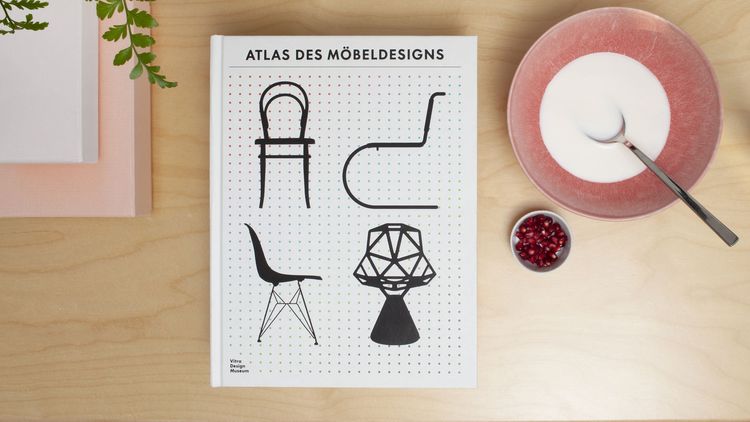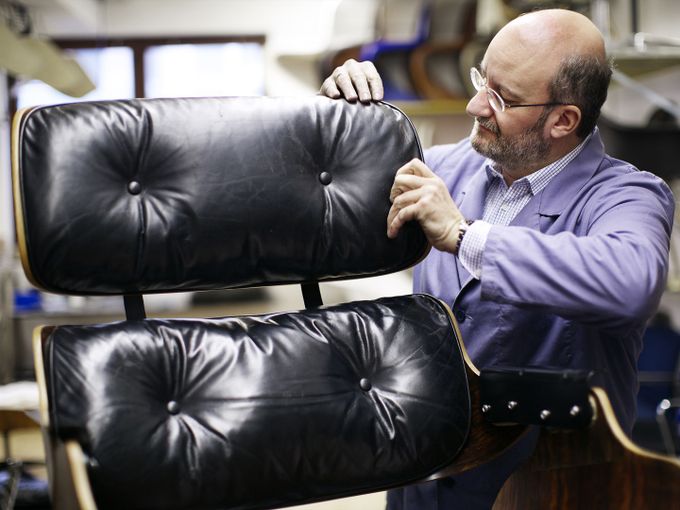ProductsChairsLounge chairsSofasOffice chairsChaises longuesStools & benchesSculpturesConference chairsAirport seatingStorage spaceMicro architectureDining tablesCafé tablesCoffee & side tablesDesksOffice furniture systemsConference systemsLightingClocksDecorative objectsCoat racks & wall shelvesTrays & vesselsNewBestsellerColour & materialAlexander Girard Antonio CitterioBarber OsgerbyCharles & Ray Eames George NelsonHella JongeriusIsamu NoguchiLounge chair finderOffice chair finderGift finderCare & repairSpare partsCare productsManufacturer warrantyVitra Circle StoresMynt: sit differentlyAntony Limited Edition 2025InspirationsLiving roomDining roomHome OfficeChildren's roomOutdoorHome StoriesAugmented RealityColours & materialsHome SelectionWorkspaceFocusMeetingWorkshopClub OfficeCitizen OfficeStudio OfficeDynamic SpacesHospitalityAirportsEducationCo-WorkingHealthcareOur ClientsDestination WorkplaceA case for classicsOffice chairsDancing OfficeHome StoriesThe Home Selection fabrics from Kvadrat and DedarAugmented Reality - bring Vitra products into your homeSchool of Design: Showcase work and knowledgeA case for classicsColour & materialAn open house An office landscape - without walls or partitionsHigh comfort of low energyA leading space for a leading art collegeServicesCare & repairCare productsManufacturer warrantyFAQ and contactInstructionsConsulting & Planning StudioVitra Circle StoresConsulting & planning in the VitraHausInstructionsOutdoor care instructionsRepair, maintenance, overhaul at the Vitra Circle Store Campus ProfessionalsCAD dataProduct factsheetsCertificatesSustainability reportInstructionsEcology informationpConPlanning examplesColour & Material LibraryCertificates and standardsHome SelectionTo the dealer loginOur ClientsMyntDestination Workplace: Visit our clients and partnersAnagram SofaMikadoTyde 2 on castorsACXDancing OfficeOffice chairsMagazineStoriesConversationsExhibitionsDesignerProject VitraCatwalk: The Art of the Fashion ShowA Capsule in TimeSeeing the forest for the treesRefining a classicMynt is a lifetime achievement to meA desk like a typefaceV-FoamSculptural IconsGames bring people together – just like good officesLet there be light!Social SeatingJust Do It!EVER GREENWhy the Eames La Fonda Chair was designedWhen a Sofa is more than just a Sofa: Anagram100% virgin wool – 100% recyclableAn archive is like a time capsuleVitraHaus Loft - A conversation with Sabine MarcelisA 1000 m2 piece of furnitureFrom a toy to an objectThe Eames Collection at the Vitra Design MuseumAbout the partnership between Eames and VitraVitra CampusExhibitionsGuided tours & workshopsFood and drinkShoppingActivities for familiesArchitectureYour eventConsulting & planning in the VitraHausPlan your visitVitra Campus appCampus EventsNewsDoshi RetreatVitraHausVitra Design MuseumVitra SchaudepotVitra Circle Store CampusOudolf GartenAbout VitraSustainabilityJobs & CareersDesign processThe Original is by VitraHistory - Project Vitra
The Atlas of Furniture Design
Three Questions for Mateo Kries, Director of the Vitra Design Museum

In the beginning of November 2019, the Vitra Design Museum published a comprehensive overview on the history of modern furniture design. The publication was preceded by over 20 years of research and collaboration with more than 70 experts worldwide. Mateo Kries, director of the Vitra Design Museum and editor of the book, answers the most important questions.


The idea to publish an encyclopedic book on the topic of furniture design existed within the team of the Vitra Design Museum since the 1990s. Now, it is done. What is unique about the Atlas of Furniture Design?
With more than 1,000 pages, the »Atlas« will be the most extensive book ever to be published on the topic. It features more than 2,800 illustrations, from object photographs to design sketches and interiors as well as patents, brochures, art, architecture, and portraits of the designers. To date, no other book has analyzed and documented the history of furniture design with such a comprehensive and scientific approach. What also makes the atlas unique is the wealth of information on multiple levels. You not only have detailed texts on individual objects, but also essays, glossaries of manufacturers and materials, biographies and of course – something no such encyclopedia should be without – detailed infographics, including various timelines on the development of design worldwide or the evolution of ground-breaking furniture types such as the cantilever chair or the Monobloc.

Over the past 30 years, the collection of the Vitra Design Museum has been carefully curated and completed to create a comprehensive impression of furniture design of the past two centuries. The book was conceived in close physical relationship with this collection. The editors working on it had direct access to the physical objects and had them re-photographed for the collection. Why was that important?
That's correct, the primary source for the Atlas of Furniture Design was the collection of the Vitra Design Museum. Over the past few years we were able to close some gaps to get to a point where we have accumulated an exhaustive overview of furniture design of the past 200 years. Having permanent access to the collection made it possible for our team to not only rely on the direct visual impact of the objects, with their patina and aura, but also to study details such as upholstery seams, fabrics, joints, and manufacturers’ marks, permitting the kind of thoroughness which is an essential prerequisite for producing new research findings. In our research over the years, we repeatedly came across inaccuracies and errors in numerous books and sources. We wanted to change that with the Atlas, which is intended to provide a reliable factual basis for scholarly research on the subject of furniture design.
The furniture collection of the Vitra Design Museum comprises more than 20,000 artefacts, around 7000 of which are pieces of furniture. The Atlas of Furniture Design contains 1740 objects. What were the criteria for the selection of objects?
We were looking out for many different criteria. The first step was to illustrate the major trends in furniture design from the early nineteenth century to the present. Naturally, it was also important to give the prominent designers adequate representation. The great classics were a must, along with explanations about certain materials, structural forms and typologies. Last but not least, in addition to the well-known pieces, we wanted to include some surprises and particularly highlight the objects that have become a part of many people’s everyday lives. Choosing the objects was ultimately like a big puzzle. And we kept going back to the fundamental question of any collection: what is really important, what has staying power?
Publication date: 28.11.2019
Images: Jürgen HANS, Bettina Matthiessen, Ludger Paffrath, © Vitra Design Museum, VG Bild-Kunst Bonn 2019


